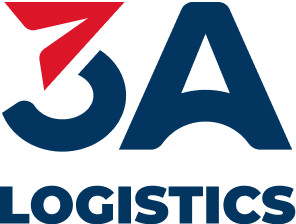Optimizing transportation routes not only helps businesses save costs and enhance efficiency but also contributes to environmental protection efforts. This article provides an in-depth look at the benefits and features of optimization services, and how they can reshape the current import and export landscape.

Benefits of Optimizing Transportation Routes
Cost Savings:
- Fuel Cost Reduction: Optimization helps reduce the distance and travel time, thereby lowering fuel consumption.
- Optimize Labor and Resources: By optimizing routes, businesses can reduce the labor and resources needed for transportation.
Improved Efficiency:
- Reduced Delivery Time: Optimized routes decrease delivery time, improving the ability to respond quickly to customer demands.
- Vehicle Layout Optimization: Use optimization to coordinate vehicles and schedule transportation to maximize efficiency.
Enhanced Customer Service:
- Accuracy and Reliability: Route optimization reduces waiting times and enhances the accuracy of the delivery process.
- Access to Information: Provides accurate and timely access to delivery times.
Risk Management:
- Preventing Traffic Jams: Optimization helps avoid traffic jams and reduces the risk of delays.
- Emergency Management: Optimization systems can reroute in emergencies, minimizing the impact on the overall route.
Environmental Protection:
- Reduced Emissions: Optimization helps reduce the fuel needed, thereby decreasing emissions generated during transportation.
Data Management and Analysis:
- Data Collection: Optimization requires detailed data on routes, time, and traffic conditions.
- Performance Analysis: This data can be analyzed to improve performance, identify trends, and optimize transportation strategies.
Features of Transportation Route Optimization Services
Smart Data Collection:
- Geographical Data: Use GPS and positioning systems to collect data on the location of vehicles.
- Weather Data: Integrate weather information to predict road conditions and adjust routes if necessary.
Optimization Algorithms:
- Optimization Algorithms: Use complex algorithms to optimize transportation routes based on factors such as distance, time, and cost.
- Constraint Handling: Deal with constraints like working time limits, load limits, and special customer requirements.
Real-Time Traffic Information Integration:
- Real-Time Traffic Information: Monitor and integrate real-time traffic information to reroute in emergencies or traffic congestion.
- Traffic Forecasting: Use historical data and traffic forecasts to predict road conditions in the future.
Continuous Monitoring and Control:
- Online Control Station: Provide continuous management with the ability to monitor transportation vehicles’ location, status, and performance.
- Detailed Information Reports: Generate detailed reports on transportation routes, delivery times, and other events.
Compatibility and System Integration:
- Compatibility with Other Systems: Ability to integrate with supply chain management and ERP systems.
- Database Connectivity: Link to customer databases, product information, and other transportation data.
Intelligent Decision Support:
- Analysis Reports: Provide reports and analysis on transportation performance, costs, and other key metrics to support strategic decision-making.
- Exception Management: Identify and manage exceptions, such as late deliveries, and provide effective solutions.
User-Friendly Interface:
- Mobile Applications: Provide user-friendly mobile applications for drivers and transportation staff.
- Web Interface: Intuitive and easy-to-use web interfaces for management and support staff.
Conclusion:
By optimizing routes, businesses can maximize resource utilization, minimize fraud, and optimize transportation processes to achieve flexibility and high accuracy. This not only enhances internal efficiency but also provides a better customer experience by ensuring accurate delivery times and predictions. Furthermore, route optimization contributes to environmental protection by reducing fuel consumption and emissions from transportation activities. This makes route optimization an essential part of modern supply chain management strategies, bringing economic, social, and environmental benefits simultaneously.
Basic Import-Export Services Provided by 3A Logistics
- Free consultation on import-export procedures.
- Free advice on export-import contracts.
- Container booking, vessel booking, and bill of lading for export or import goods.
- International transportation by sea (less than container load and full container load).
- Customs clearance services for import and export goods.
- Preparation of inspection, quality control, and inspection procedures.
- Agency for Customs declaration for import and export.
- Free advice on the HS code and import tax of goods.
- Packing of goods (wooden crates, light crates, wooden pallets, plastic pallets, PE wrapping, etc.).
- Disinfection, and inspection of goods, especially agricultural products.
- Application for certificates of origin for export goods (Forms A, B, E, D, AK, AJ, AANZ, etc.).
- Transportation services for trucks and tractors.
- Free legal advice on Customs Law and related regulations on import and export.
- Full-package import and export services: business, non-commercial, processing, manufacturing for export, import-export in place, re-export, etc.
- Comprehensive import-export service (Door to Door) and outsourcing import-export service.
- Full-package import-export services are professionally outsourced.
- Import and export services in Hanoi, Hai Phong, Da Nang, Quy Nhon, Ho Chi Minh City, Can Tho, Long An, Tay Ninh, Binh Duong, Dong Nai, etc.
Contact Information for 3A Logistics
3A International Logistics JSC:
- Head Office: 12th floor, Sao Mai Building, 19 Le Van Luong Street, Dong Da District, Hanoi City, Vietnam.
- Hotline: +84 246-296-846
- Email: [email protected]
- Website: 3A Logistics
- Facebook: 3A Logistics
- Linkedin: 3A Logistics








